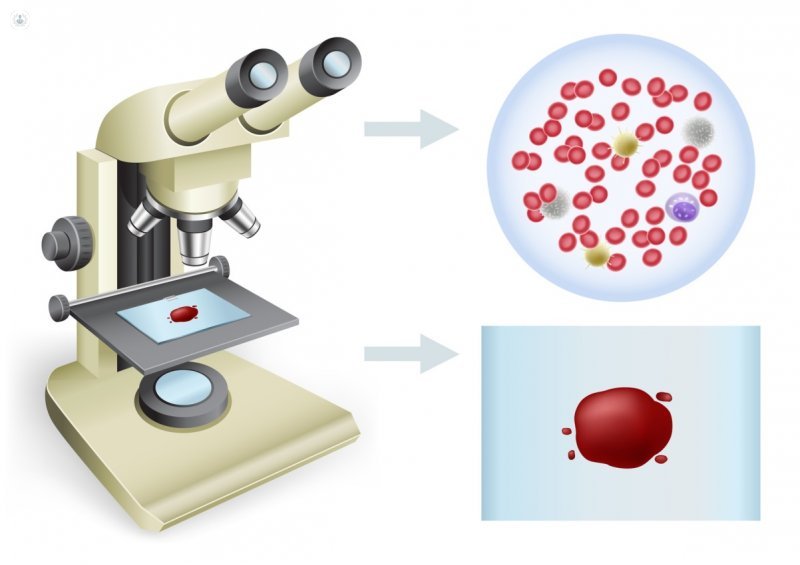Functions and pathologies of platelets
Written in association with:Blood is a vital element for the functioning of the human body. Has a liquid component, plasma, where a large number of substances necessary for our life is transported, and three types of cells. Red blood cells (carry oxygen), white blood cells (exert a defensive function) and platelets.
What are platelets?
Platelets are portions of a larger cell, called a megakaryocyte, located on the factory blood (bone marrow). Each megakaryocytes, the fragmentation, produces hundreds of platelets enter the blood. These, having no core, they can not be divided or reproduced. Blood usually last about 9 days.
Platelets help to protect us from bleeding. Continuously breaks are small blood vessels that are plugged by platelets. Platelets are able to detect breakage or injury of a blood vessel and fixed, helping immediately stop bleeding. Subsequently, they contribute to initiate clotting of the blood to plugging of blood loss more effective.
According to specialists in Hematology platelets they are essential to ensure the integrity of the blood circulation stopping bleeding. Normal platelet count is between 120,000 and 400,000 per microliter of blood. Generally, it is necessary to determine the number of platelets when they are less than 100,000 or more than 500,000 in a repeated manner.

Problems associated with platelet
Three types of problems associated with platelets:
- Thrombocytopenia, ie having less normal platelets. It is the most common problem, however, most of the time has no impact because often, but have less platelets, they are able to assure hemostasis (normal blood circulation without bleeding) correct. If the platelet count is very low, the patient will have problems bruises and bleeding.
- Thrombocytosis, that is, having more normal platelets. Increased platelet count is a physiological defense mechanism in case of inflammation and infection. Therefore, in these cases the platelet count may be higher than normal. If the platelet count is too high occurs at increased risk of thrombosis. The clearest example of this problem is given in a blood disorder called essential thrombocythemia in which the patient may have from 2 to 5 times normal platelet counts. Another common cause of high platelets have low iron, a situation which must be assessed in these patients.
- Thrombocytopathy, ie, having platelets malfunction. Although the figure could be normal, there is a tendency to hemorrhage. Most of this malfunction is due to platelet drug delivery. This administration may be intentional (to improve circulation or prevent thrombosis) or be a side effect of a drug.
Most common diseases associated with platelet
- Gestational thrombocytopenia or thrombocytopenia: thrombocytopenia means "low number of platelets". A common cause is a decrease in platelets that is seen in many pregnant women. Not usually need treatment. Has the problem that if the drop is important can not be given an epidural because of the risk of bleeding.
- Primary immune thrombocytopenia: also called idiopathic thrombocytopenic purpura. It is generally a decrease of platelets immunologic (destroy our own body altered platelet autoimmunity). Often the drop in platelets is not serious. As it is often necessary and sometimes cortisone treatment immunoglobulins. Recently it has new treatments for patients who do not respond as trombopag and romiplostin.
- Essential thrombocythemia: It is a benign tumor of platelets that occur in an uncontrolled manner and if left untreated can lead to having thrombosis. Treatment has two goals, one preventing thrombosis with small doses of aspirin, and secondly decrease the platelet count has reached dangerous when figures usually hydroxyurea.
- Thrombocytopenia or thrombocytopenia secondary to cancer treatments: is one of the most common causes of platelet decline. They are usually due to the effect of chemotherapy on blood factory. When the descent is compromised platelet is required platelet transfusions.
Are there platelet transfusions?
If they exist. They have them from blood donors and are available in blood banks and transfusion services. They can be obtained from a normal blood donation or platelet donation special. In the first case it is necessary to separate platelets from red blood cells and collecting this fraction from several donors got a lot of enough platelets for transfusion (usually 5 donors). In the second case with an apheresis machine we can get from a single donor platelets higher quality.


